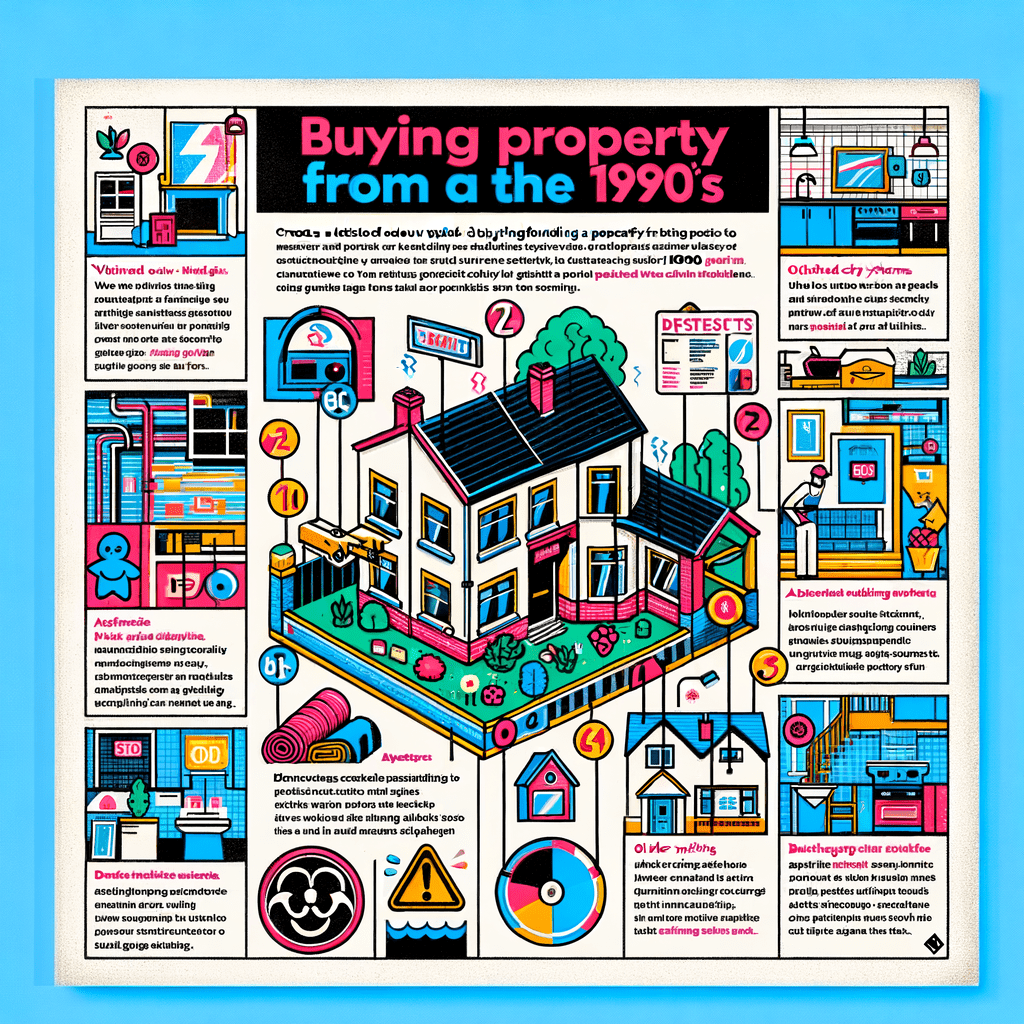A Comprehensive Guide to Buying a 1990s Property: Typical Defects, Hazards, and Characteristics
Understanding the 1990s Property Landscape
The 1990s marked a significant period in the UK housing market, characterised by a blend of modernity and traditionalism. Properties from this era often reflect the architectural and construction trends of the time, which were influenced by economic conditions, technological advancements, and evolving lifestyle preferences. Understanding these characteristics is crucial for prospective buyers and investors to make informed decisions.
Architectural and Design Features
Properties built in the 1990s often exhibit a mix of contemporary and traditional design elements. Here are some typical characteristics:
- Open-Plan Living: The 1990s saw a shift towards open-plan living spaces, with fewer walls separating the kitchen, dining, and living areas. This design aimed to create a sense of spaciousness and facilitate social interaction.
- Double Glazing: Most 1990s properties were constructed with double-glazed windows, which improved energy efficiency and reduced noise pollution.
- Brick and Render Exteriors: The use of brick and render was common, providing a durable and aesthetically pleasing finish.
- Integrated Garages: Many homes from this era feature integrated garages, reflecting the increasing importance of car ownership.
- Conservatories: The addition of conservatories became popular, offering extra living space and a connection to the garden.
Technological Advancements
The 1990s witnessed significant technological advancements that influenced property construction and amenities:
- Central Heating Systems: Modern central heating systems became standard, providing efficient and reliable heating solutions.
- Electrical Wiring: Properties from this decade typically have more advanced electrical wiring compared to older homes, accommodating the growing number of electrical appliances.
- Insulation: Improved insulation materials were used, enhancing energy efficiency and reducing heating costs.
Economic and Social Influences
The economic and social context of the 1990s also played a role in shaping the housing market:
- Economic Recovery: The early 1990s experienced a recession, but the latter part of the decade saw economic recovery, leading to increased property development and homeownership.
- Urban Expansion: There was a trend towards urban expansion, with new housing developments emerging on the outskirts of cities and towns.
- Changing Lifestyles: The rise of dual-income households and changing lifestyle preferences influenced the design and functionality of homes.
Typical Defects in 1990s Properties
While 1990s properties offer many advantages, they are not without their potential defects. Being aware of these common issues can help buyers make informed decisions and plan for necessary repairs or renovations.
Structural Issues
- Subsidence: Although less common than in older properties, subsidence can still occur in 1990s homes, particularly in areas with clay soil. Look for signs such as cracks in walls, doors, and windows that stick, or uneven floors.
- Roofing Problems: Roofs may suffer from wear and tear over time. Check for missing or damaged tiles, leaks, and issues with the roof structure.
- Damp and Mould: Poor ventilation and insulation can lead to damp and mould issues. Look for signs of dampness on walls, ceilings, and around windows.
Plumbing and Heating
- Boiler Age and Condition: Boilers installed in the 1990s may be nearing the end of their lifespan. Ensure the boiler is in good working condition and consider the cost of replacement if necessary.
- Pipework: Older pipework may be prone to leaks and corrosion. Inspect visible pipes for signs of damage and consider a professional inspection for hidden issues.
Electrical Systems
- Outdated Wiring: While 1990s properties generally have more modern wiring than older homes, it’s essential to check for any outdated or unsafe electrical systems. Look for signs of wear, such as frayed wires or outdated fuse boxes.
- Insufficient Sockets: The increasing number of electrical devices in modern homes means that properties from the 1990s may have insufficient electrical sockets. Consider the cost of adding additional sockets if needed.
Windows and Doors
- Double Glazing Issues: Double-glazed windows from the 1990s may suffer from condensation between the panes, indicating a failure of the seal. This can reduce energy efficiency and may require window replacement.
- Door and Window Frames: Check for signs of rot or damage to wooden frames, and ensure that all doors and windows open and close properly.
Insulation and Energy Efficiency
- Insulation Degradation: Insulation materials can degrade over time, reducing their effectiveness. Inspect the loft and walls for adequate insulation and consider upgrading if necessary.
- Energy Performance: Properties from the 1990s may not meet current energy efficiency standards. An Energy Performance Certificate (EPC) can provide valuable information

